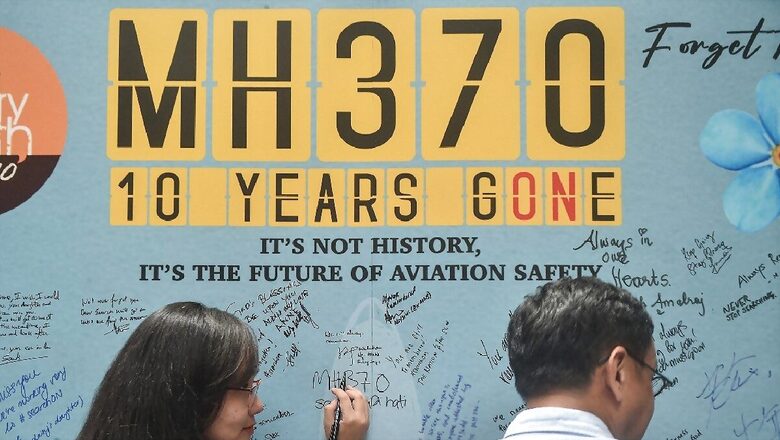Flight MH370 Mystery: UK Researchers Claim They Picked Up Signal That Could Lead To Plane’s Wreckage

views
Researchers from the UK’s Cardiff claimed that they found a signal that may lead them to the lost Malaysia Airlines Flight MH370’s final resting place ten years after its mysterious disappearance.
Underwater microphones, also known as hydrophones, are said to have picked up a signal, lasting for six seconds, around the same time as MH370 is believed to have crashed on March 8, 2014, according to a report by the Daily Mail.
Researchers from Cardiff discovered the six-second signal and said more tests would help determine whether the sounds that the hydrophones recorded could lead to the plane’s wreckage believed to be underneath the Indian Ocean.
The Cardiff researchers began with an assumption that a 200-ton aircraft like the MH370 would release as much kinetic energy as a small earthquake if it crashed at a speed of 720 km/hr.
They posited that the kinetic energy from the crash would have been big enough to be recorded by underwater microphones thousands of miles away.
Two underwater microphones or hydrophones – one in Australia’s Cape Leeuwin and the other in Mauritius’ Diego Garcia – were close enough to detect such a signal.
Applied mathematics professor and researcher Dr Usama Kadri, who is leading the research, told the Telegraph that it was ‘highly unlikely’ that the sensitive hydrophones did not pick up the impact of a plane of that size crashing into the ocean.
“If the signals detected at both Cape Leeuwin and Diego Garcia are much stronger than the signal in question, it would require further analysis of the signals from both stations. If found to be related, this would significantly narrow down, almost pinpoint, the aircraft’s location,” he told the Telegraph.
“We analysed data from the Comprehensive Nuclear-Test-Ban Treaty Organization’s (CTBTO) hydroacoustic stations. We focused on data from stations at Cape Leeuwin in Western Australia and Diego Garcia, an island in the Indian Ocean,” he was quoted as saying by The Conversation in a separate report.
These hydrophones were actually set up to detect violations to the Comprehensive Nuclear Test-Ban Treaty and they are located just tens of minutes away from where the plane was last detected on radar.
“Both locations were operational around the time MH370 is believed to have crashed. These stations are located within tens of minutes’ signal travel time from the seventh arc. CTBTO stations have previously detected distinctive pressure signals from aircraft crashes, as well as earthquakes of various sizes at distances of more than 5,000 kilometres away,” he further added.
The plane crashed with 239 people onboard, and is believed to have run out of fuel. It remains unclear why it deviated from its course from Kuala Lumpur to Beijing for unknown reasons.
Authorities, search teams and aviation experts launched extensive searches covering an area of 120,000 square kilometres but no one has been able to locate the wreckage of the aircraft.
Some parts of the aircraft have been found, and many theories about why and how the flight changed course have emerged. However, no one knows for sure what happened to the Boeing 777.



















Comments
0 comment